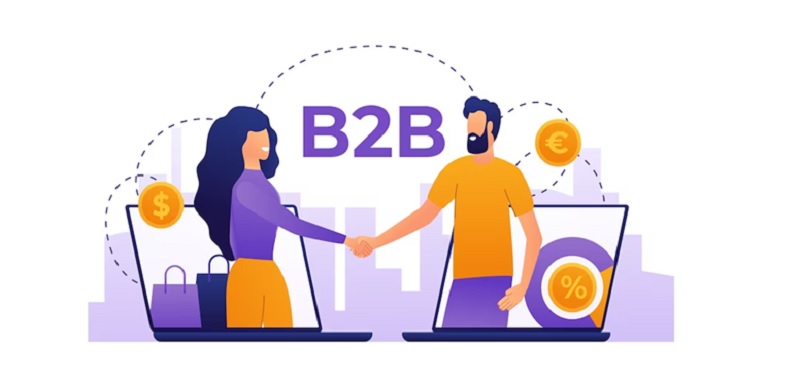How to Effectively Map Your B2B Customer Journey

TechsPlace | In the fiercely competitive business environment, mastering the customer journey is crucial, particularly in the B2B domain. Charting this journey allows businesses to trace the customer’s route from first becoming aware of a product or service to making the purchase and even after.
This isn’t just about tracking a customer’s steps; it’s about deeply grasping their experiences, necessities, and challenges. Let’s dive into the key steps for effectively charting the B2B customer journey.
Understanding the unique aspects of B2B customer experience
B2B customer experience stands apart from B2C. In B2B, decisions often go through a more complex process, needing nods from various stakeholders. This complexity is intensified by longer sales cycles and higher financial stakes, coupled with the requirement for comprehensive product knowledge.
In B2B, it’s less about individual consumer gratification and more about fulfilling the strategic needs of another business. This necessitates a thorough comprehension of the client’s organizational structure, business operations, and specific hurdles they face.
In B2B, tailoring the customer experience means offering solutions that seamlessly fit into the client’s business framework. This involves not only knowing your product or service but also understanding how it affects different facets of the client’s business like efficiency, profitability, and strategy. The focus is on nurturing relationships, delivering top-notch service, and keeping communication clear and consultative.
Defining your customer personas
In B2B, a customer persona is a semi-fictional archetype representing your ideal client, formed from market research and actual customer data. This persona encompasses the customer’s business role, industry, organizational size, challenges, motivations, and buying behaviors, including their decision-making process and specific business needs.
Developing these personas involves collecting and analyzing data from various channels, including customer feedback, surveys, sales history, and service team interactions. This data aids in crafting a comprehensive profile that reflects the attributes of your primary customer segments. With a clear understanding of these personas, businesses can tailor their marketing and sales strategies more effectively, ensuring messages hit the mark.
Awareness stage
- Identifying the need
The journey begins when a potential client acknowledges a need or problem. At this juncture, your aim should be to raise awareness about your brand and solutions. Employ strategies like content marketing, social media engagement, and targeted ads to connect with your audience.
- Offering educational content
Post content that addresses common queries or concerns in the form of blogs, whitepapers, webinars, or case studies. This positions your brand as a knowledgeable leader and a trusted information source.
Consideration stage
- Exploration and evaluation
Upon recognizing their issue, B2B customers embark on researching and comparing different solutions. This phase may involve perusing reviews, seeking advice, or examining case studies.
- Personalized engagement
Here, your marketing and sales teams should engage prospects with customized and personalized communication. It’s crucial to comprehend each prospect’s specific needs and deliver information that aligns with their unique circumstances.
Decision phase
- Crafting proposals and negotiating
At this critical juncture in B2B, the focus turns to proposal presentation, negotiations, and finalizing contracts. Your sales team must be adept at these negotiations, underscoring the unique benefits your solution offers to the client’s business.
- Cultivating relationships
In B2B sales, the power of relationships cannot be overstated. This stage calls for personalized interactions and efforts to foster trust. Engage in meaningful dialogues, offer tailored demos, or propose pilot programs to reinforce this bond.
The purchase phase
- Ensuring a smooth transition
Post-sale, a seamless onboarding process is key. Your customers must understand the ins and outs of your product or service to maximize its benefits.
- Providing support and training
Offer comprehensive training and support to ensure your customers transition smoothly into using your product or service. This might involve assigning dedicated account managers, forming customer support teams, or developing training modules.
Focusing on retention and advocacy
- Continued engagement
The B2B journey extends well beyond the purchase. Ongoing support and nurturing are critical for customer retention and to transform customers into brand advocates. Regular check-ins, updates on new features, or access to exclusive resources are effective tactics.
- Creating a feedback loop
Establish a system to continuously collect and respond to customer feedback. This feedback is vital for refining your offerings and enhancing the overall customer experience.
Harnessing technology and data
- Utilizing CRM systems
Employ Customer Relationship Management (CRM) systems to track customer interactions, manage relationships, and analyze behavioral patterns throughout their journey.
- Applying analytics
Use analytics to understand how customers engage with your brand. Insights gained from this data are invaluable for journey optimization and pinpointing areas needing improvement.
Iterate and Evolve
The customer journey is a dynamic entity. It’s important to regularly revisit and revise your journey map, taking into account new findings, shifts in customer behavior, or changes in the market. Flexibility and a willingness to adapt your approach are essential to meet evolving customer needs.
Conclusion
Crafting a B2B customer journey is a complex, ongoing endeavor that hinges on deep customer insights, strategic foresight, and continual refinement. By effectively charting and enhancing this journey, you’re not just boosting customer experiences but also nurturing enduring relationships, thereby propelling growth and success for your business. In the realm of B2B, the goal transcends beyond a mere transaction; it’s about forging a lasting partnership.

Author and publisher at techsplace.com.





